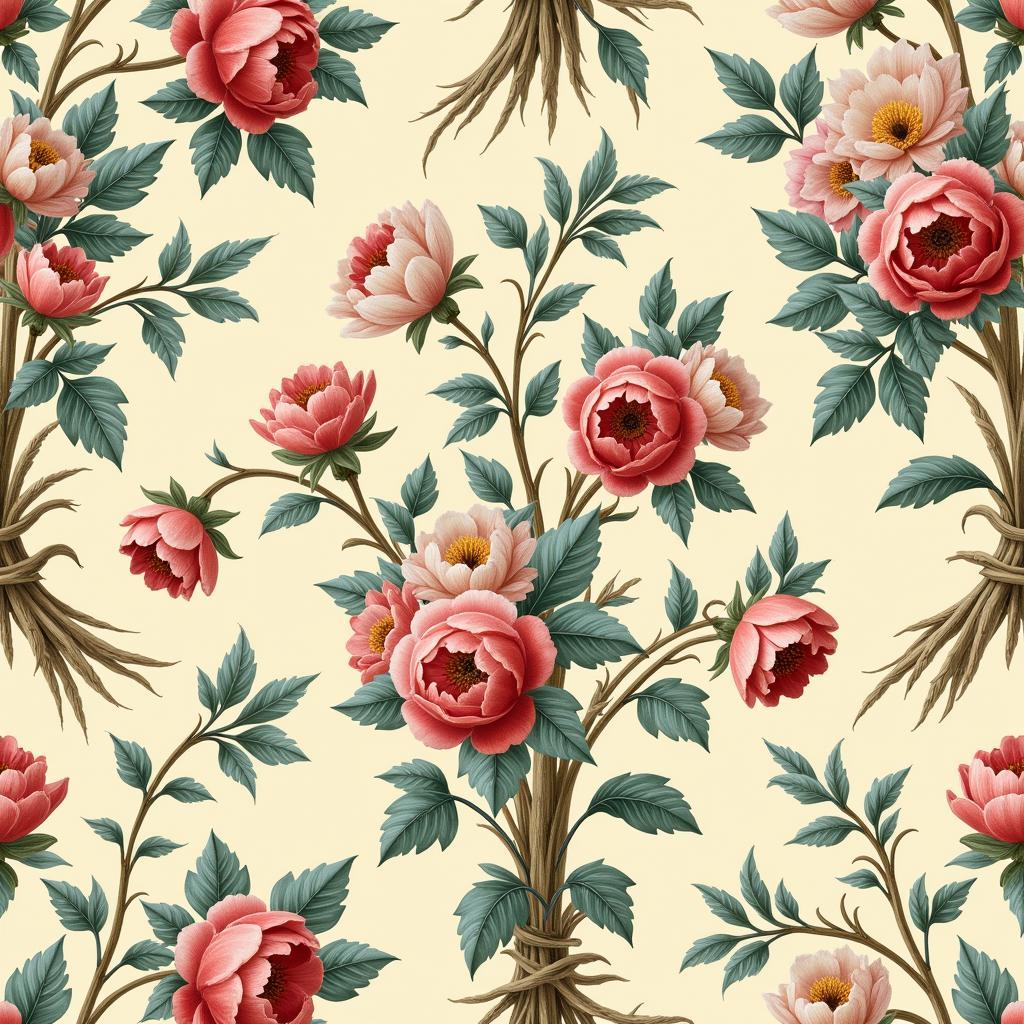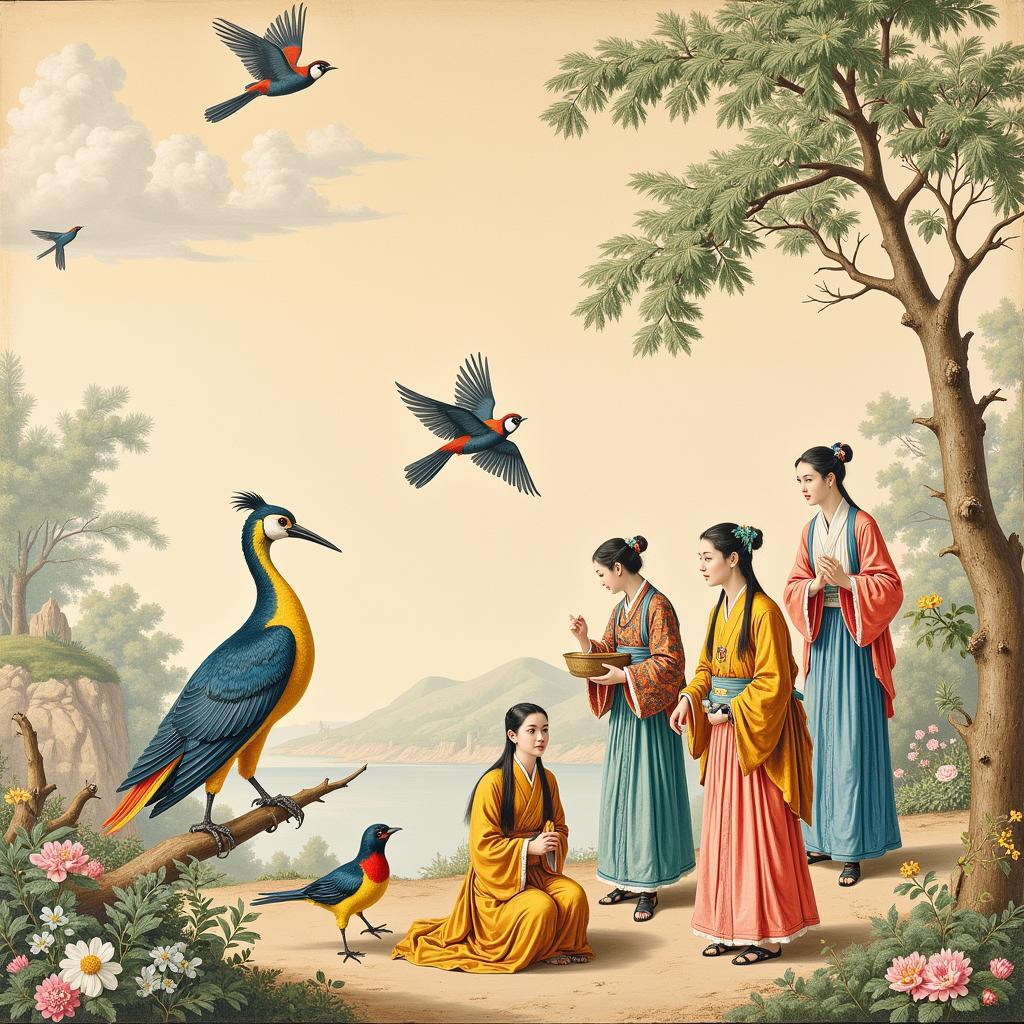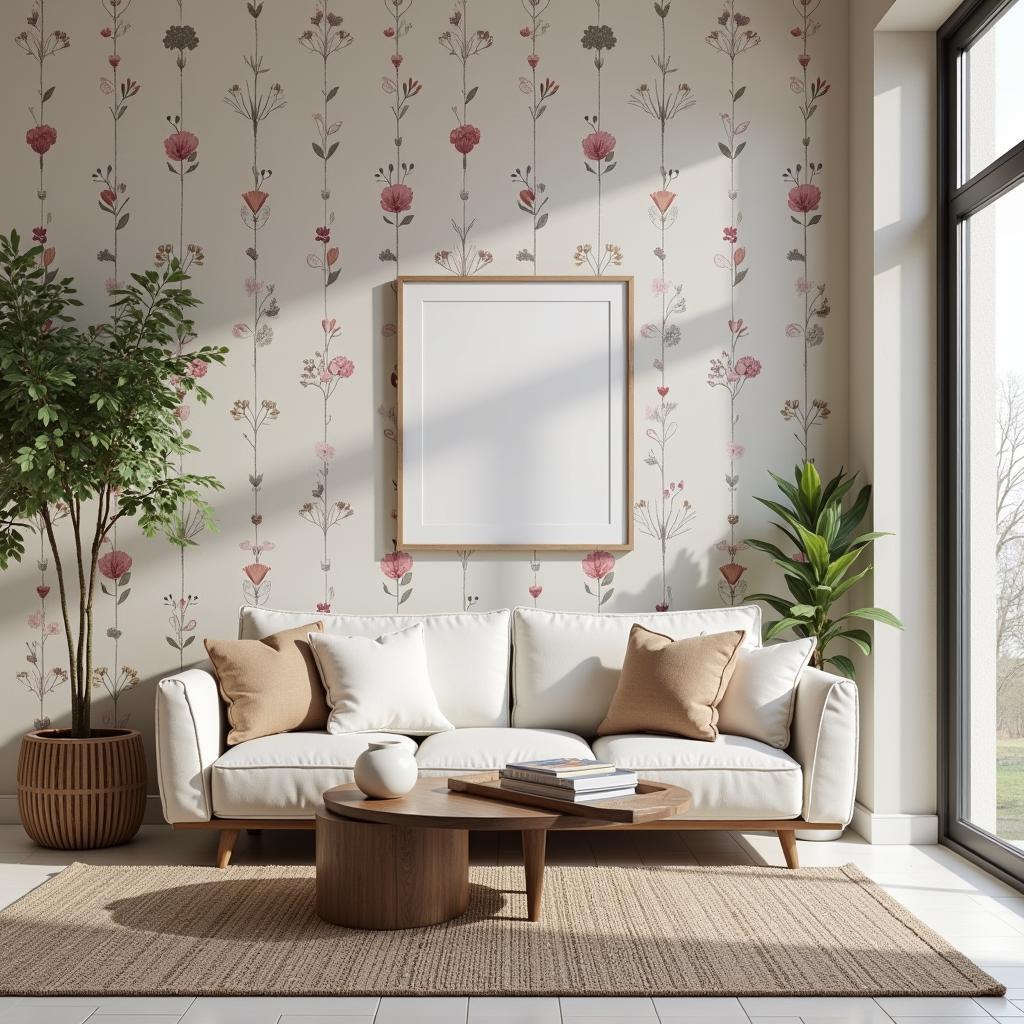Stepping back in time to the 18th century, we encounter a world adorned with intricate details and lavish decorations, especially when it comes to interior design. Among the most captivating elements of this era is the exquisite artistry of 18th-century wallpaper. More than just wall coverings, these masterpieces offered a glimpse into the social, economic, and artistic trends of the time.
 Floral patterns on 18th-century wallpaper
Floral patterns on 18th-century wallpaper
The Rise of Wallpaper
Prior to the widespread use of wallpaper, walls were typically adorned with tapestries, fabrics, or simply painted. However, the 18th century witnessed a surge in the popularity of wallpaper. This shift can be attributed to several factors.
Firstly, advancements in printing techniques allowed for the mass production of wallpaper, making it a more affordable option for a wider range of society. Secondly, the growing middle class sought ways to emulate the opulence of the aristocracy, and wallpaper provided an accessible means to achieve a similar aesthetic in their own homes.
Styles and Motifs: A Reflection of the Times
18th-century wallpaper designs were far from monotonous. They reflected the prevailing artistic movements of the era, each with its own distinct characteristics:
Baroque Grandeur:
The early 18th century saw the continuation of the Baroque style, characterized by dramatic scenes, mythological figures, and an overall sense of grandeur. These large-scale designs often featured rich colors and elaborate details, creating an immersive and theatrical ambiance.
Rococo Elegance:
As the century progressed, Rococo emerged as the dominant style. This movement favored lighter, more whimsical designs, often featuring delicate floral motifs, pastoral scenes, and Chinoiserie elements inspired by the fascination with the Orient.
Neoclassical Simplicity:
Towards the latter part of the century, Neoclassicism gained prominence, bringing with it a return to classical ideals. Wallpaper designs reflected this shift with a focus on symmetry, balance, and motifs inspired by ancient Greek and Roman art and architecture.
 Chinoiserie scene on 18th-century wallpaper
Chinoiserie scene on 18th-century wallpaper
Beyond Aesthetics: Functionality and Symbolism
The appeal of 18th-century wallpaper extended beyond its decorative value. Wallpaper also served practical purposes:
-
Insulation: Wallpaper provided an extra layer of insulation against drafts, a significant benefit in colder climates.
-
Concealing Imperfections: It effectively masked imperfections on plaster walls, creating a more polished look.
Moreover, specific patterns held symbolic meanings:
-
Floral motifs: Symbolized nature’s bounty and were often associated with prosperity and good fortune.
-
Exotic animals: Represented far-off lands and the allure of the unknown.
-
Classical figures: Evoked notions of education, refinement, and a connection to the past.
A Lasting Legacy
The artistry and craftsmanship of 18th-century wallpaper continue to captivate and inspire. Antique pieces are highly sought after by collectors and museums, while contemporary designers draw inspiration from the intricate patterns and timeless elegance of this bygone era.
 Modern interior with wallpaper inspired by 18th-century designs
Modern interior with wallpaper inspired by 18th-century designs
FAQ
1. How was 18th-century wallpaper made?
Early wallpapers were often hand-painted or stenciled. However, the invention of woodblock printing and later, more advanced printing methods, enabled mass production.
2. What materials were used to make 18th-century wallpaper?
Paper was the primary material, but early versions were made from linen and canvas. Pigments were derived from natural sources such as minerals, plants, and insects.
3. Can I still find authentic 18th-century wallpaper today?
Yes, though rare, authentic pieces can be found through specialized antique dealers, auction houses, and museums.
4. What is the value of 18th-century wallpaper?
The value varies greatly depending on factors such as the rarity of the design, the condition, and historical significance.
5. Is it possible to recreate 18th-century wallpaper designs?
Yes, many companies specialize in reproducing historical wallpaper patterns using both traditional and modern printing techniques.
For more information about historical artifacts and design, explore our other articles on [insert relevant article title] and [insert another relevant article title].
Need help finding the perfect historical inspiration? Contact us at Phone Number: 0909802228, Email: doibongda@gmail.com or visit us at 101 Đ. Lý Chiêu Hoàng, Phường 10, Quận 6, Hồ Chí Minh, Việt Nam. Our customer service team is available 24/7.